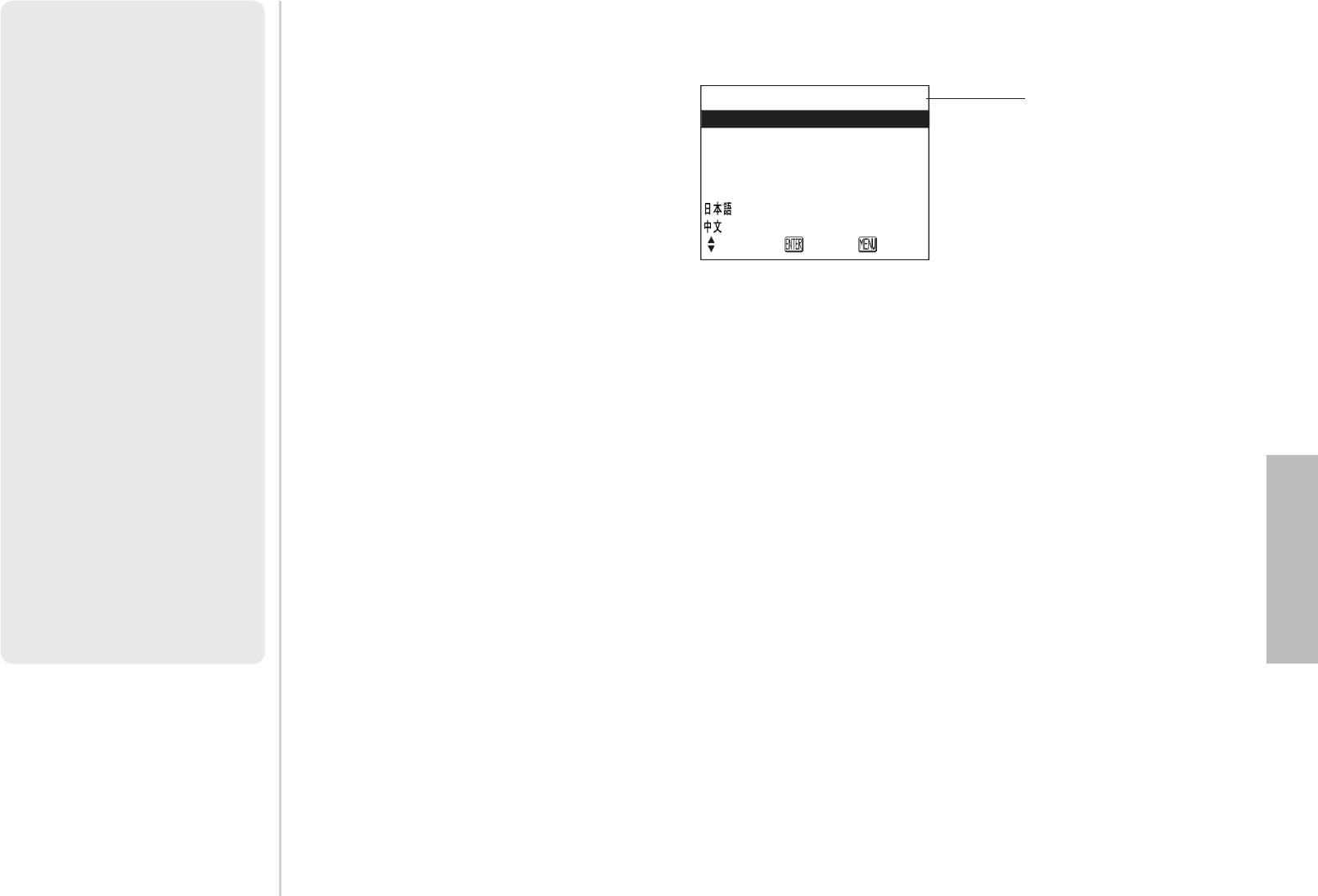
ENGLISH-41
Adjustments and settings
40-ENGLISH
RESIZING
This should normally be set to “ON”.
(This setting is only for signals
which have lower resolutions than
the LCD panels. Refer to page 58
for details.)
ON
The pixel resolution of the input
signal is converted to the same
resolution as the LCD panels before
being projected. For signals with
lower resolutions, gaps in the pixels
are automatically interpolated into
the picture before it is projected.
This may sometimes cause
problems with the quality of the
picture.
OFF
The picture signal is projected at its
original resolution, with no pixel
conversion. The projected picture
will be smaller than normal, so
adjust the zoom setting or move the
projector forwards or backwards to
adjust the picture size if necessary.
If set to “OFF”, some features, such
as D.ZOOM (digital zoom),
keystone distortion correction or
INDEX WINDOW will not function.
FRAME LOCK
If the picture’s condition is bad while
a RGB moving picture signal is
projected, set the FRAME LOCK to
“ON”. Refer to page 58 on
compatible RGB signals.
Changing the display language
Use the F and G buttons on the projector or remote control unit to select a
language, then press the ENTER button to accept the setting.
Indicates the language which is
currently set
LANGUAGE ENGLISH
ENGLISH
DEUTSCH
FRANÇAIS
ESPAÑOL
ITALIANO
SELECT ENTER RETRN
NOTE:
B
This projector is equipped with an
aspect ratio selection function.
However, if a mode which does
not match the aspect ratio of the
input signal is selected, it may
affect the quality of viewing of the
original picture. Keep this in mind
when selecting the aspect ratio.
B
If using this projector in places
such as cafes or hotels with the
aim of displaying programmes for
viewing for a commercial purpose
or for public presentation, note
that if the aspect ratio (16:9)
selection function is used to
change the aspect ratio of the
screen picture, you may be
infringing the rights of the original
copyright owner for that
programme under copyright
protection laws.
B
If a normal (4:3) picture which was
not originally intended for wide-
screen viewing is projected onto a
wide screen, distortion may occur
around the edges of the picture so
that part of the picture is no longer
visible. Such programmes should
be viewed in 4:3 mode to give
proper consideration to the aims
and intentions of the original
programme’s creator.


















